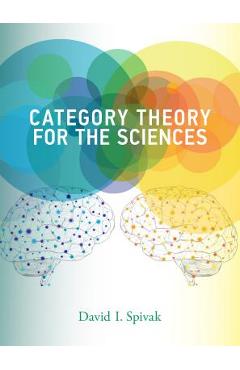Category Theory for the Sciences - David I. Spivak

Detalii Category Theory for the Sciences
libris.ro
430.03 Lei
477.81 Lei
Mathematics
David I. Spivak
Category Theory for the Sciences - Disponibil la libris.ro
Pe YEO găsești Category Theory for the Sciences de la David I. Spivak, în categoria Mathematics.
Indiferent de nevoile tale, Category Theory for the Sciences - David I. Spivak din categoria Mathematics îți poate aduce un echilibru perfect între calitate și preț, cu avantaje practice și moderne.
Preț: 430.03 Lei
Caracteristicile produsului Category Theory for the Sciences
- Brand: David I. Spivak
- Categoria: Mathematics
- Magazin: libris.ro
- Ultima actualizare: 28-10-2025 01:22:05
Comandă Category Theory for the Sciences Online, Simplu și Rapid
Prin intermediul platformei YEO, poți comanda Category Theory for the Sciences de la libris.ro rapid și în siguranță. Bucură-te de o experiență de cumpărături online optimizată și descoperă cele mai bune oferte actualizate constant.
Descriere magazin:
An introduction to category theory as a rigorous, flexible, and coherent modeling language that can be used across the sciences. Category theory was invented in the 1940s to unify and synthesize different areas in mathematics, and it has proven remarkably successful in enabling powerful communication between disparate fields and subfields within mathematics. This book shows that category theory can be useful outside of mathematics as a rigorous, flexible, and coherent modeling language throughout the sciences. Information is inherently dynamic; the same ideas can be organized and reorganized in countless ways, and the ability to translate between such organizational structures is becoming increasingly important in the sciences. Category theory offers a unifying framework for information modeling that can facilitate the translation of knowledge between disciplines. Written in an engaging and straightforward style, and assuming little background in mathematics, the book is rigorous but accessible to non-mathematicians. Using databases as an entry to category theory, it begins with sets and functions, then introduces the reader to notions that are fundamental in mathematics: monoids, groups, orders, and graphs--categories in disguise. After explaining the big three concepts of category theory--categories, functors, and natural transformations--the book covers other topics, including limits, colimits, functor categories, sheaves, monads, and operads. The book explains category theory by examples and exercises rather than focusing on theorems and proofs. It includes more than 300 exercises, with solutions. Category Theory for the Sciences is intended to create a bridge between the vast array of mathematical concepts used by mathematicians and the models and frameworks of such scientific disciplines as computation, neuroscience, and physics.

Produse asemănătoare

Category Theory for the Sciences, Hardcover/David I. Spivak
![]() elefant.ro
elefant.ro
Actualizat in 26/10/2025
375.99 Lei